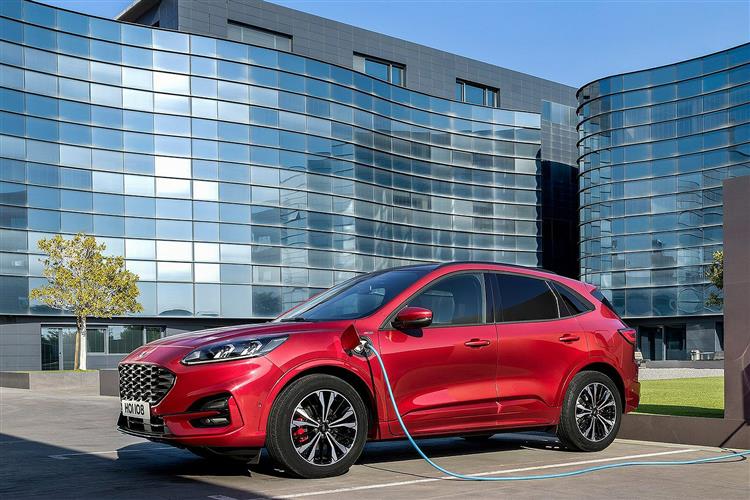How will you view?
This is a sample, showing 30 seconds of each section.
PLUG & PLAY? (some text hidden) SECTIONED_new_fordkugaphev_2020
By Jonathan Crouch
Introductionword count: 90
Back in 2020, it seemed you couldn't have a cutting-edge mid-sized SUV of any kind without having a Plug-in Hybrid version, so Ford offered that tech with the original version of its third generation Kuga crossover. There are the usual PHEV calling card features here - a 35 mile all-electric driving range, a super-low Benefit-in-Kind taxation rating and a rather high sticker price. Built into a package that should feel a touch more dynamic than most of its rivals. Here, we look at the pre-facelift 2019-2023 version of this model.
Modelsword count: 6
5 door SUV [petrol] 2.5 PHEV
Historyword count: 164
Perhaps being a market leader is about following established trends rather than pioneering new ones. Ford certainly seems to work that way. The Blue Oval brand didn't really establish any sort of real presence in the SUV sector until the second generation version of its mid-sized Kuga crossover model was facelifted in 2017. And it took the company almost until the 21st century's third decade to properly launch its first volume made EV (the Mustang Mach-E) and its first plug-in car, the Kuga PHEV model which is our focus here. This was the third generation Kuga, moved subtly up-market to make space for the freshly introduced Puma crossover which slotted in below this model. By 2019, it was just as well that the Canadian-built Edge SUV was no more as the Kuga PHEV's asking price would have trampled all over it - it was knocking on the door of premium territory. It's the pre-facelift 2019-2023-era versions of this CX482-series model we look at here.
What You Getword count: 277
There are no really obvious visual giveaways that this plug-in variant is the PHEV model in the range - unless you're sharp-eyed enough to spot the extra flap for the charging point. If you're not familiar with this third generation design, you'll find it to be significantly bigger than its predecessor, 44mm wider and 89mm longer, with a wheelbase increased by 20mm. At the wheel, it's much as it would be in a Focus hatch from the period, with an 8-inch centre-dash SYNC 3 infotainment touchscreen. You sit quite high, the cabin's pretty spacious and plenty of tinsel was added to upper-spec variants to try and justify more exalted price positioning, though ultimately, some hard and scratchy lower order plastics betray this cabin's relatively humble origins. Upper-spec variants get a 12.3-inch digital instrument cluster, which incorporates a right hand 'Power Gauge', showing in kWs the current output of either battery or engine. In between the two main dials is a customisable section into which you can add various EV-orientated read-outs. The rear bench wasn't compromised by battery placement, as is the case with some PHEV models. And it reclines for greater comfort and slides over a range of 150mm, allowing you to choose between legroom and luggage space behind. As for luggage space, well cargo capacity is still significantly reduced by the plug-in package - down from 475 to 411-litres. Slide the rear seat forward as far as it will go (in which case there'll be very little legroom for back seat folk) and there'll be 581-litre of room (down from 645-litres normally). Flatten the 60:40-split-folding bench and there's 1,481-litres of total capacity to the window line.
To see the full road test text contact us on 0330 0020 227
Pictures (high res disabled)

.jpg)
|
.jpg)
|
.jpg)
| |||
.jpg)
|
.jpg)
|
.jpg)
| |||
.jpg)
|
.jpg)
|
.jpg)
| |||
.jpg)
|
.jpg)
|

|
Scoring (subset of scores)
Category: Hybrid, Plug-in, Electric & Hydrogen
| Performance | |
| Handling | |
| Comfort | |
| Space | |
| Styling, Build, Value, Equipment, Depreciation, Handling, Insurance and Total scores are available with our full data feed. | |





